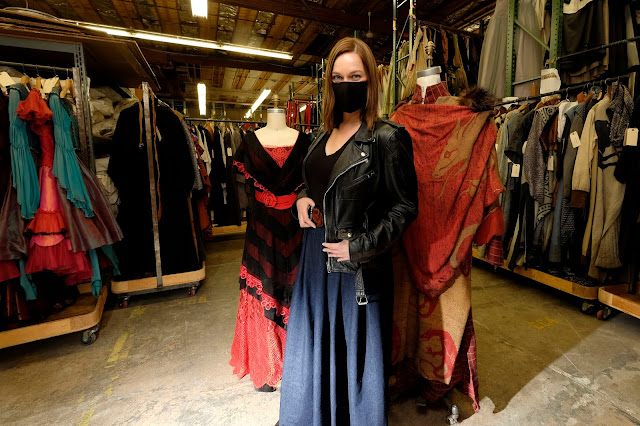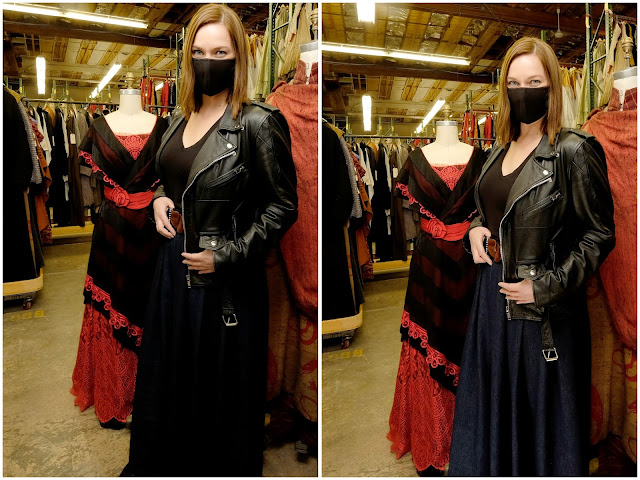For a compilation of the morning walk images, click here.
From the start, my manual focusing experience has been limited to the X-E Bodies (1 and 2) and the X-Pro Bodies (1 and 2). For right now, I'm reserving my X-T bodies for Auto-Focus Zoom Lens applications, and keeping manual focus exploration restricted to recreational shooting.
Before you begin shooting, adjust your camera body to the following settings:
- Set Body To Shoot Without Lens: Using your menu, be sure that the Shoot Without Lens function is set to "On". I found this option a little harder to find in the X-Pro2 menu structure.
- Set Exposure Control to Aperture Priority: This is done by rotating the shutter speed dial to the "A" setting. Exposure will be based on the light passing through the shooting aperture you select.
- Set Focus Mode To Manual: The switch is located at the front of the camera body. This will activate Focus Peaking and viewfinder magnification.
Camera Body Layout: So far as ease of use is concerned, the X-Pro bodies I've used have a slight advantage over the E-series bodies. Simply put, the big difference I've experienced is the placement of the Preview Button.
 |
| X-E body (above left) and X-Pro2 body (above right). Red Arrows show Playback Button. |
On the X-Pro bodies, the placement of the Playback Button (red arrows) is on the right side of the LCD Monitor, and can be accessed easily with the right thumb. It is much easier to review your images with the X-Pro body when you hold the camera with your left hand.
Magnified Viewing and Manual Focus Assist Modes: Pressing the center of the Command Dial (blue arrow) magnifies the view in the electronic viewfinder or on the LCD Monitor display. Once in the magnified view mode, rotating the Command Dial will toggle between 4X and 6X magnification. This is extremely useful for establishing critical focus.
A single, prolonged press on the Command Wheel allows you to select the desired Manual Focus Assist Mode (Standard, Focus Peaking, or Digital Split Image when available)
Focus Frame Selection: Digital SLR cameras have always had multiple focusing frames, a real boon to photographers when their compositions emphasized regions not in the center of the frame. This valuable feature, as applied to the Fuji camera bodies, can be extremely helpful when focusing manually. Check your instruction manual for the section that covers Focus Frame Selection.
Old School/New School: Old school photographers would insist that the focus point (small brackets indicating where focus is determined) be positioned in the center of the screen. It also coincided with the location of the whatever optical focusing aids (either micro prism or a split image rangefinder) built into a film-fueled SLR camera body. Photographers were forced to compose the frame with the main subject (I'll call it the Focal Point) in the center, focus on the subject, then re-compose the image to reflect the intended layout. This focus-reframe-shoot sequence was how things were done in the film days, and many photographers, myself included, continued the practice into the auto-focusing, digital era.
I've placed a Fuji X-Pro1 on a tripod to help illustrate the steps I take when focusing manually. behind it, a second camera, focused on the LCD, was used to simulate what the photographer would actually see. A quick apology for the poor quality of the images, since the difficulty associated with photographing the display of a digital camera using another digital camera should not be underestimated.
Compose The Image: Using the viewfinder, I'll do the forward/backward, left/right, and up/down positioning dance until I get the desired composition. The red arrow shows the default position in the center of the viewfinder.
Position The Focus Frame: The focal point will probably not be perfectly centered if you're following the guidelines suggested by the Rule Of Thirds. Using your four selector buttons, position the Focus Frame over your point of focus, and tap the shutter release button to lock the position in place. Hitting the "OK" button will return the Focus Frame to the center. Check your manual to see how this is done. BTW: The Focus Frame turns green when you're in the re-position mode.
Magnify The Viewing Image: Press the Command Dial to enlarge the viewfinder image, then rotate the command dial to choose either the 4X or 6X magnification options. Fuji cameras with eye-level viewing options allow you to use your forehead for additional support while focusing. The sample shown here is 4X.
Focus The Lens, And Shoot: Since your composition has already been established, you're free to focus on your subject with the knowledge that when you make your exposure, critical focus and the desired framing will have already been established. I suggest that you experiment with both the Standard and the Focus Peaking modes to see which you prefer.
I also suggest that you focus both in front of, and behind, your desired point of focus, as you really need to see how the camera's display, viewfinder or rear LCD, renders critical focus. When you're happy with what you see, press the shutter release, and your shot is made.
Review The Image: The coolest part of this whole process is that when you magnify the image in the Review mode, it zooms in on the position where the focus frame was at the moment the image is made. You'll have to try this out for yourself.
This sounds like a lot of work, and if you've never used a film camera without auto-focus, you may be asking yourself why one would even bother. Truth is, now that I must focus manually, I tend to think more about the technical aspects of the photo, and have a greater sense of accomplishment when everything, the exposure, the composition, and the shutter release, all work together. I definite believe the quality of my images has improved significantly, and this should always be a personal goal no matter what the endeavor.



















